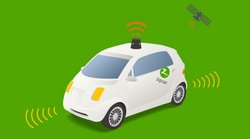Ride Services Appear To Be Driving People Out of Their Cars
This may not seem like news because it’s been conventional wisdom for so long, but up to now there has been little documentation of a decline of car ownership due to new ride sharing mobility apps.

A Reuters/Ipsos opinion poll published this month (May 2017) has defined the shift everyone has been talking about for years. Nine percent of those polled had given up their cars and shifted to exclusively using ride services. Another similar percentage said they planned to do the same in the coming year.
This may be less than 20 percent of a portion of potential new car buyers, but the impact has the potential to blow up the old model of automobile purchasing. And the fear of automakers is that this may only be the tip of the iceberg as different mobility services roll out (some, ironically, coming from the automakers themselves).
New Cars for Services May Not Replace Them
One possible upside of the mobility services is more frequent purchases of cars by the drivers for the services, who will be putting on more miles, and therefore needing to buy new cars more often. By the aggregating nature of the mobility services, it is clear that the app world will not create more sales than the traditional model.
Reuters quoted Lyft Director of Transportation Policy Emily Castor as saying the survey was “early evidence” that its vision of a world where personal car ownership was unnecessary was beginning to take hold.
Survey Details

As the first survey of this type, there is no basis to tell if the number of car-droppers is growing, but future polls should be able to illuminate that trend.
The survey did find that 39 percent of Americans had used ride services and that 27 percent of that group used the services several times per week. The poll was conducted online in English April 5-11, 2017. It had responses from 584 people who said they disposed of their personal vehicle within the past 12 months and 566 people who said they planned to get ride of their personal vehicles in the next 12 months.
The poll had a five percent margin of error. It should be interesting to revisit the subject next year–and the year after.
